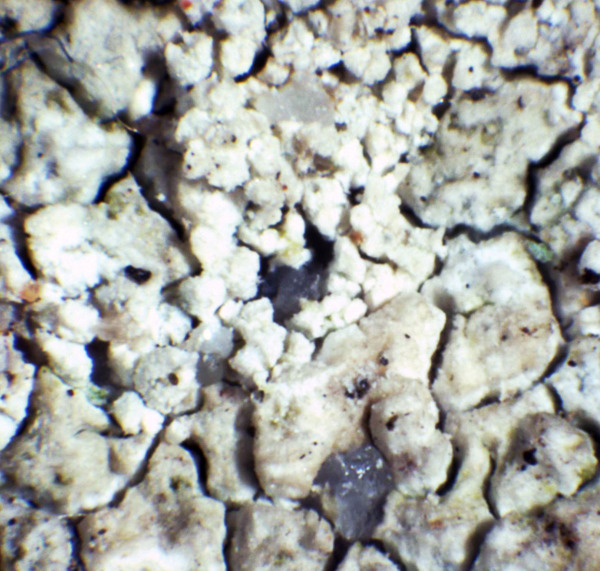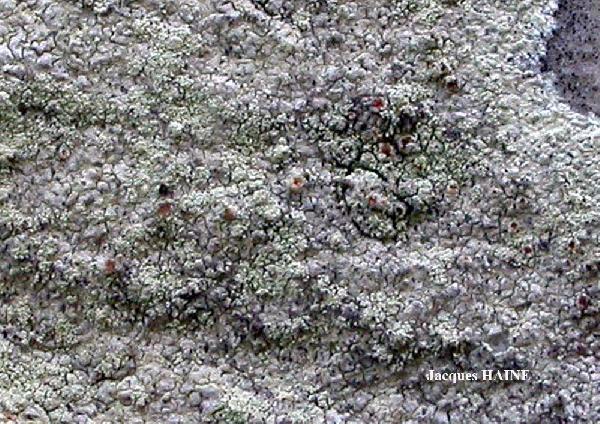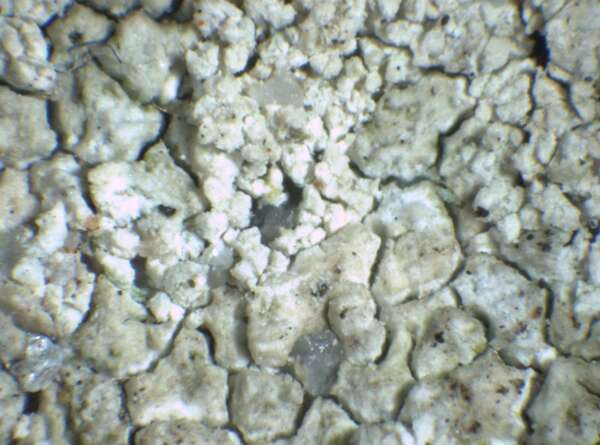Pertusaria flavicans Lamy
Bull. Soc. Bot. France, 25: 427, 1878.
Synonyms: Pertusaria sulphurea Schaer. p.p. nom. illegit.
Distribution: N - Frl (Tretiach & Hafellner 2000), Ven (Nascimbene & al. 2021), TAA, Lomb (Nascimbene 2006, Favero-Longo & al. 2023), Emil (Tretiach & al. 2008, Fariselli & al. 2020), Lig (Brunialti & al. 1999). C - Tosc (Pišút 1997, Tretiach & al. 2008), Laz, Sar (Monte 1993, Nöske 2000, Rizzi & al. 2011, Cossu & al. 2015, Neuwirth 2018, Brackel & Berger 2019). S - Bas (Puntillo & al. 2009, 2012, Potenza & Fascetti 2012), Si (TSB 17035).
Description: Thallus crustose, episubstratic, rather thick, yellowish to greyish green, rimose-areolate, the areoles flat to convex, 0.5-1.5(-2) mm wide, forming large patches, sometimes delimited by a pale prothallus, sorediate. Soralia 0.4-1.2 mm across, at first orbicular, then often confluent, yellowish green (paler than thallus); soredia coarsely to finely granular, 35-90 μm. Apothecia rare, lecanorine, immersed in thalline warts, with an initially punctiform, later expanded disc. Epithecium K+ violet; hymenium and hypothecium colourless. Asci 8-spored, broadly cylindrical, the apex with a broad ocular chamber, the outer sheath K/I+ blue, otherwise K/I-, with an inner extensible layer, Pertusaria-type. Ascospores 1-celled, hyaline, ellipsoid, 60-75 x 20-30 µm. Photobiont chlorococcoid. Spot tests: thallus and soralia K-, C+ orange, KC+ orange, P-, UV+ orange (soralia UV+ brighter orange). Chemistry: thiophaninic acid, and variable amounts of O-methylmonochlornorlichexanthone.Note: on lime-free but mineral-rich siliceous rocks, mostly on sheltered, steeply inclined surfaces; chemically variable and in need of further study.
Growth form: Crustose
Substrata: rocks
Photobiont: green algae other than Trentepohlia
Reproductive strategy: mainly asexual, by soredia, or soredia-like structures (e.g. blastidia)
Most common in areas with a humid-warm climate (e.g. most of Tyrrenian Italy)
Poorly known taxon in need of further study
Commonnes-rarity: (info)
Alpine belt: rather common
Subalpine belt: very common
Oromediterranean belt: absent
Montane belt: rather common
Submediterranean belt: very rare
Padanian area: absent
Humid submediterranean belt: rather rare
Humid mediterranean belt: rare
Dry mediterranean belt: absent
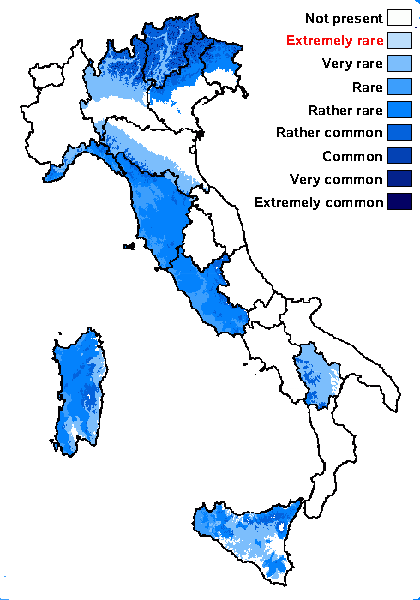
Predictive model
Herbarium samples
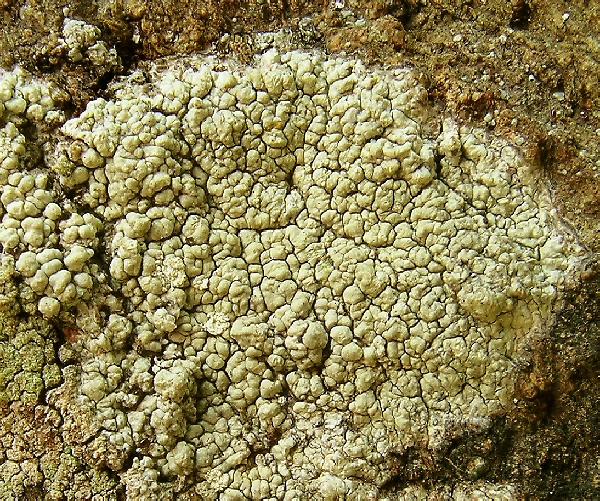
Ulrich Kirschbaum CC BY-SA 4.0 - Source: https://www.thm.de/lse/ulrich-kirschbaum/flechtenbilder
Central Europe; Germany: Hesse. (150 m above sea level). (Coll/ident:Eichler/Cezanne). on siliceous rocks
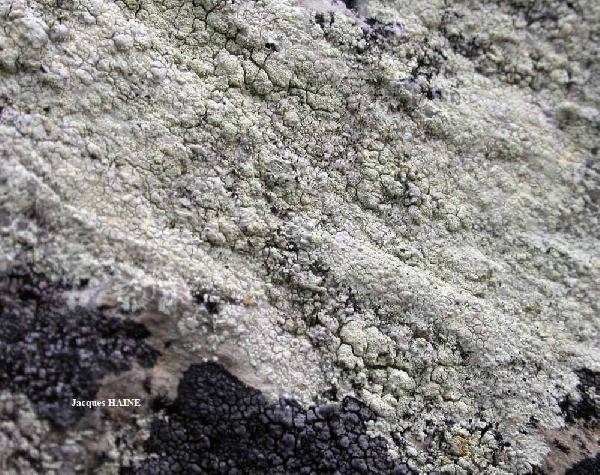
Jacques Haine - Source: http://www.lichensmaritimes.org/index.php?task=fiche&lichen=135&lang=en
Belgium, Monthermé
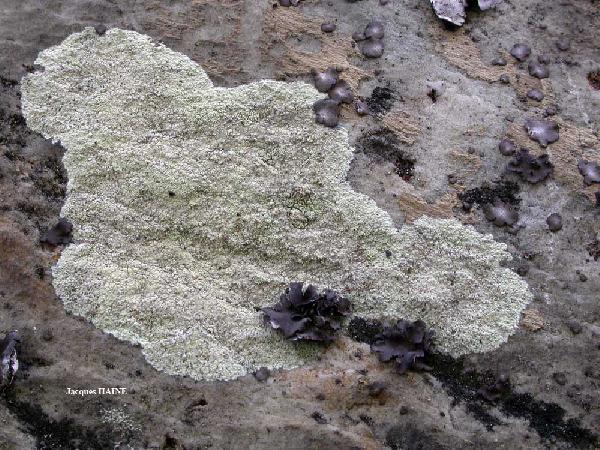
Jacques Haine - Source: http://www.lichensmaritimes.org/index.php?task=fiche&lichen=135&lang=en
Belgium, Monthermé
Growth form: Crustose
Substrata: rocks
Photobiont: green algae other than Trentepohlia
Reproductive strategy: mainly asexual, by soredia, or soredia-like structures (e.g. blastidia)
Most common in areas with a humid-warm climate (e.g. most of Tyrrenian Italy)
Poorly known taxon in need of further study
Commonnes-rarity: (info)
Alpine belt: rather common
Subalpine belt: very common
Oromediterranean belt: absent
Montane belt: rather common
Submediterranean belt: very rare
Padanian area: absent
Humid submediterranean belt: rather rare
Humid mediterranean belt: rare
Dry mediterranean belt: absent

Predictive model
| Herbarium samples |

Ulrich Kirschbaum CC BY-SA 4.0 - Source: https://www.thm.de/lse/ulrich-kirschbaum/flechtenbilder
Central Europe; Germany: Hesse. (150 m above sea level). (Coll/ident:Eichler/Cezanne). on siliceous rocks

Jacques Haine - Source: http://www.lichensmaritimes.org/index.php?task=fiche&lichen=135&lang=en
Belgium, Monthermé

 Index Fungorum
Index Fungorum
 GBIF
GBIF
